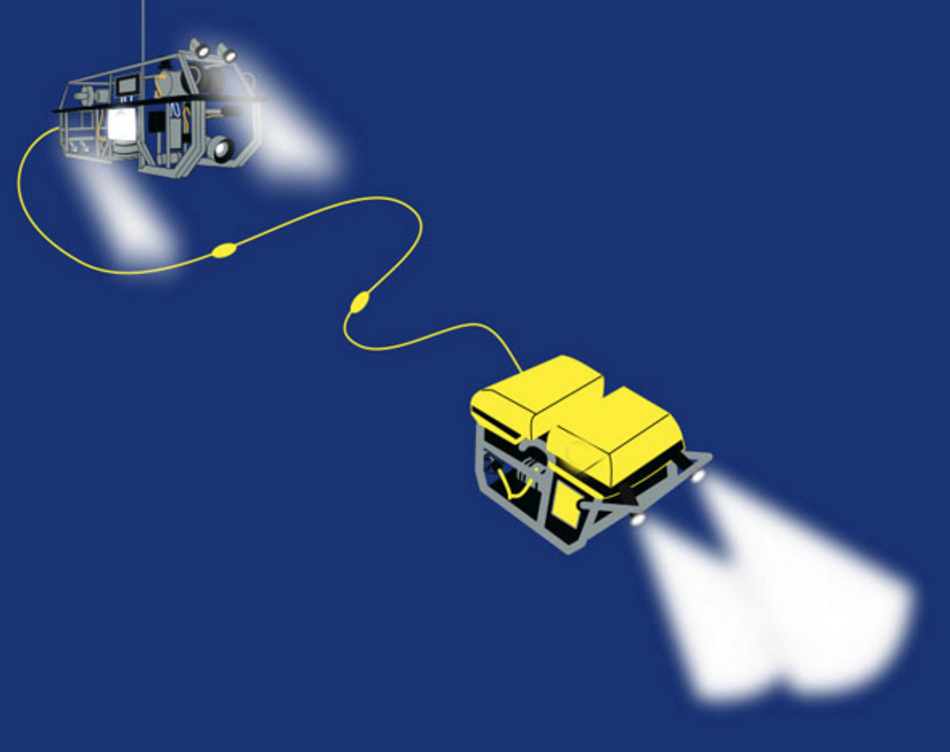ROV stands for remotely operated vehicle. They are unoccupied underwater submarines tethered to a ship by a cable that controls and powers it, and are controlled by a person on the surface using some sort of control box. They are usually equipped with a camera and lights, making them extremely useful for ocean exploration. They are used in a variety of ways to collect data about the ocean, and are also used in many educational programs. Overall, they allow scientists to travel deeper and with more freedom, which will forever change how we study to ocean.
ROVs have manipulator arms used for grabbing, cameras used for viewing, sampling equipment and sampling, a tether, and tool sleds used for specific missions. Depending on the mission, more power and electricity will be needed for the ROV to move.
The ROV moves through its tether. Its tether is the ROV’s power source. The longer the tether, the further the ROV can move throughout the ocean. ROVs move vertically, not horizontally, and can manage to turn left and right.
There are many ways that ROVs can sense the world. Ultimately, it is up to the builder to be able to choose what they want to see. ROVs can have compasses on them to get a sense of direction. Lamps can be installed, to be able to view the dark deep sea. Manipulator arms can be used to grab and bring items back up the surface. Scientists can even use temperature sensors to see how cold the ocean is.
ROVs need to be able to communicate with the builder, or else it is next to impossible to understand where the ROV is. ROVs use cameras to provide a view to its builders and let scientists see exactly where it is. In a case where the ROV shuts down, its tether is very useful to bring the ROV back on.
One example of an ROV is Hercules. It was built by the Institute For Exploration (IFE) and originally designed to study shipwrecks, but it is also used for research in biology and geology of the deep sea. It can descend to depths of 4,000 meters, and is equipped with sensors and cameras to gather video during its dives. Hercules works in tandem with another ROV, known as Argus. They are connected to each other by a tether, and Argus has cameras and lights on it that allow scientists to view Hercules from above. Hercules has been used for many missions funded by the NOAA such as a dive to the Titanic, studying hydrothermal vents at the Mid-Atlantic Ridge, and many more.
NOAA Hercules
Jason/Medea is another example of an ROV, which was designed by Woods Hole oceanographic Institution’s Deep Submergence Laboratory. Jason is used for deep sea and sea floor missions. It has two names because it is a two-body ROV, and is also considered one of the first ROVs built for scientific missions.NOAA Hercules
NOAA JASON
Here is a list of other ROVs: NOAA ROV List
Sources:
No comments:
Post a Comment